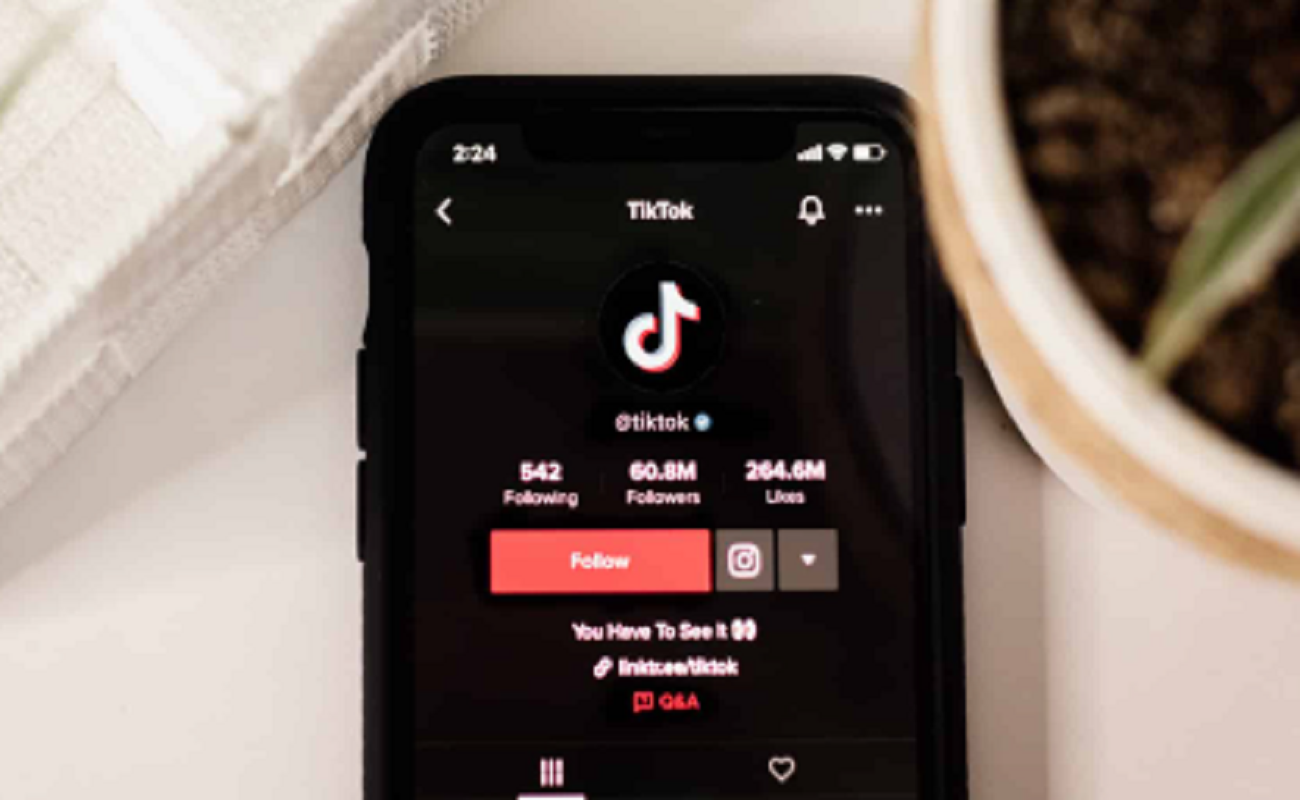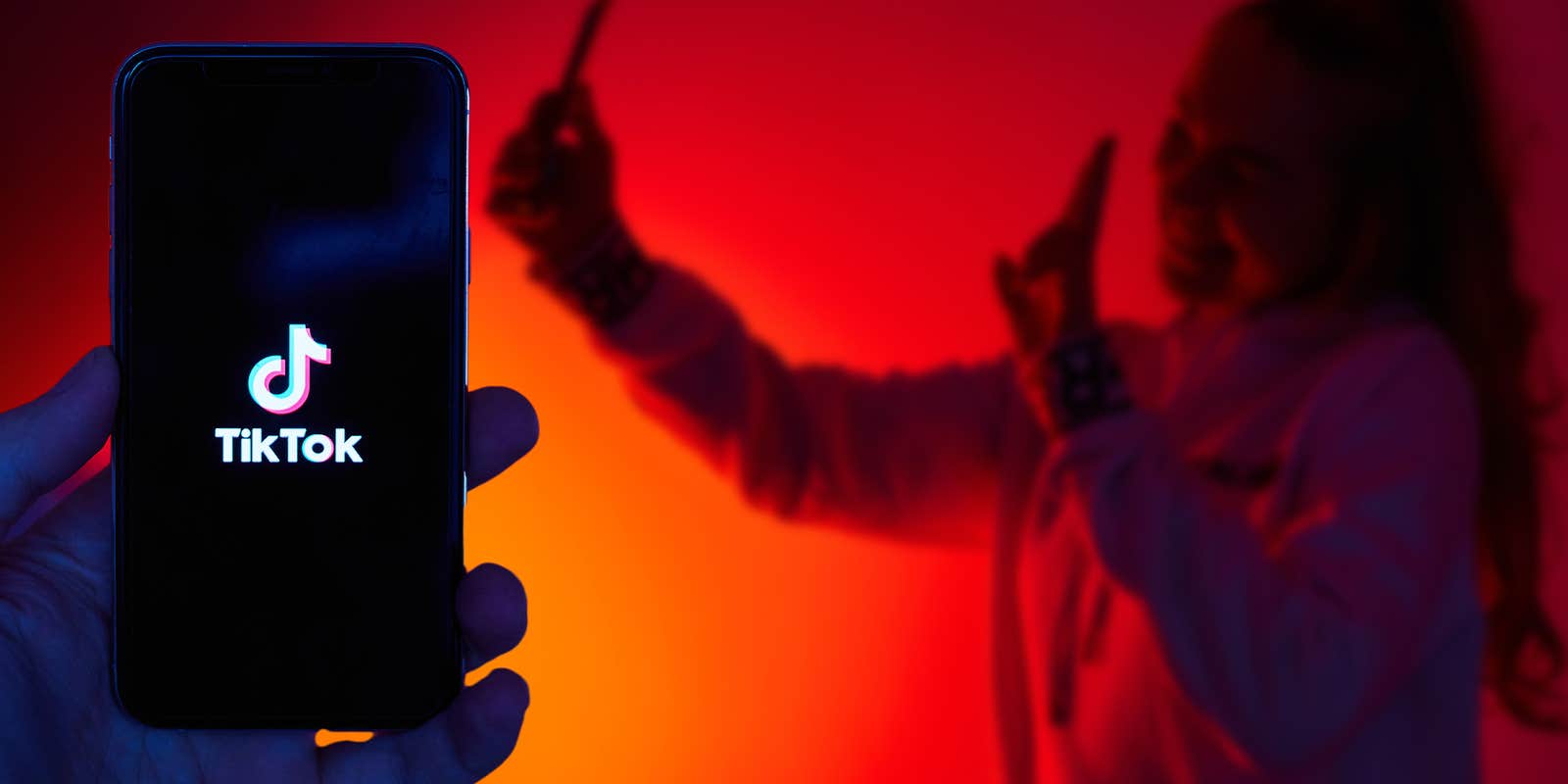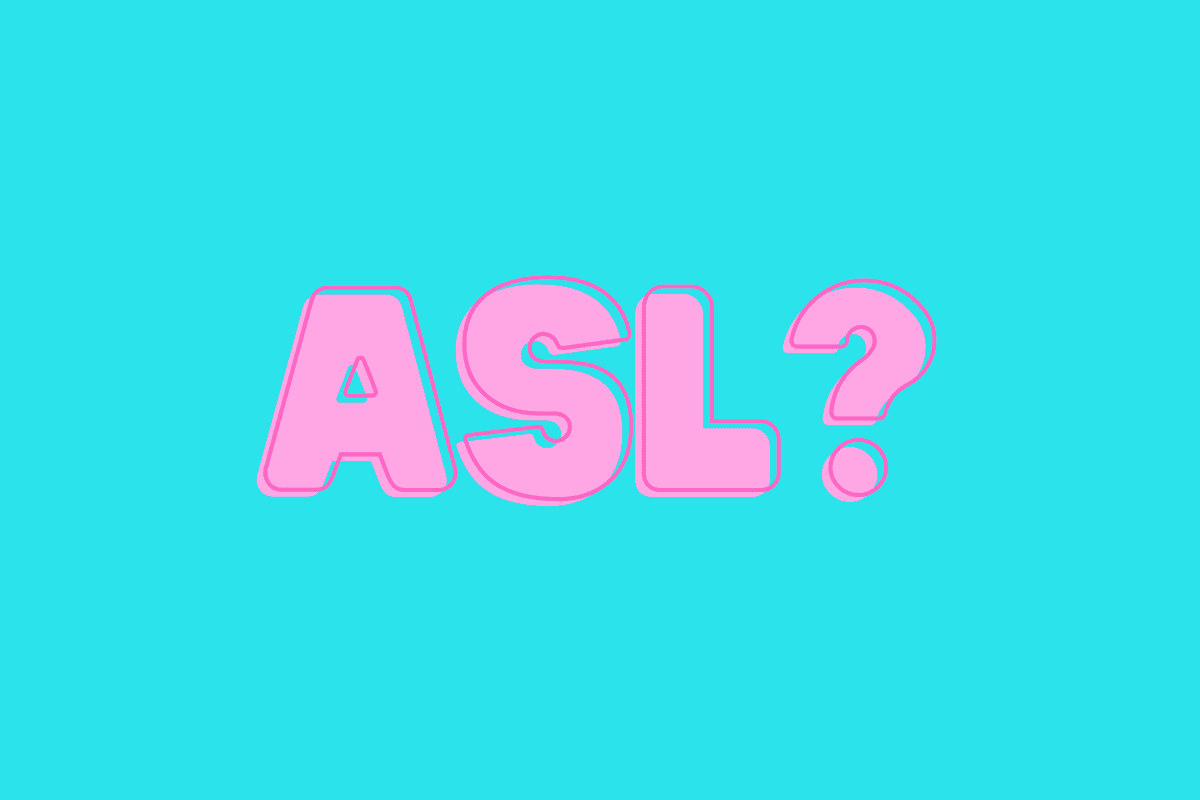Decoding: What Does ASL Mean On TikTok? + Guide
Ever wondered what those intricate hand gestures flooding your TikTok feed mean? The answer is simpler and more profound than you might think: ASL, or American Sign Language, is taking center stage, connecting communities and redefining communication in the digital age.
ASL isn't just a series of random movements; it's a fully developed, complex language with its own grammar, syntax, and cultural nuances. It serves as the primary mode of communication for countless deaf and hard of hearing individuals across the United States and Canada, permeating schools, workplaces, and social gatherings. Its burgeoning presence on platforms like TikTok is driven by the vibrant creativity of Deaf and hard of hearing content creators, who are leveraging the platform to share their stories, insights, and artistry.
| ASL Facts | |
|---|---|
| Full Name | American Sign Language |
| Type | Visual Language |
| Primary Users | Deaf and Hard of Hearing Communities in the US and Canada |
| Key Features | Hand gestures, facial expressions, body language |
| Related Resources | National Association of the Deaf (NAD) |
ASL isn't merely a substitute for spoken language; it's a rich, expressive form of communication capable of conveying the full spectrum of human emotions and ideas. It is a tool that fosters connection, empowers individuals, and enriches the cultural landscape. Understanding ASL is not just about learning a new language; it's about gaining insight into a unique culture and fostering a more inclusive and understanding world.
- Unveiling Corinna Kopf Fapello The Truth Behind The Trend
- Jessica Kinley Onlyfans Leaks What You Need To Know Now
ASL, short for American Sign Language, stands as the cornerstone of communication for a significant portion of the deaf and hard of hearing population in both the United States and Canada. It operates as a complete linguistic system, possessing its distinct grammatical rules and sentence structure. Its application spans diverse environments, from educational institutions and professional settings to informal social events.
- Communication: ASL presents a visual method of communication that relies on hand formations, expressive facial cues, and deliberate body positioning to convey meaning.
- Culture: ASL occupies a central position within Deaf culture. It serves as a means of transmitting narratives, humor, and personal experiences.
- Education: ASL is employed within academic institutions as a medium for instructing deaf and hard of hearing students.
- Entertainment: ASL finds expression in theatrical performances, dance productions, and various other forms of entertainment.
- Advocacy: ASL empowers deaf and hard of hearing individuals to champion their rights and address pertinent issues.
- Technology: ASL is increasingly incorporated into technological applications, such as video conferencing platforms and social media networks.
- Popularity: ASL's visibility has surged on platforms like TikTok, fueled by the growing presence of Deaf and hard of hearing content creators.
These core elements collectively underscore ASL's significance and adaptability. Functioning as both a language and a cultural identifier, ASL serves as a powerful instrument for communication, education, entertainment, advocacy, and technological integration. It constitutes an invaluable asset for the Deaf and hard of hearing community and offers a gateway to understanding Deaf culture.
The visual nature of ASL, with its reliance on hand gestures, facial expressions, and body language, makes it exceptionally well-suited for platforms like TikTok. Content creators can craft videos that are not only informative but also visually captivating, drawing in a broad spectrum of viewers.
- Decoding Zodabuz7 Sophie Rain Spiderman Why Its Trending
- Who Is Tim Scotts Daughter All About Jenn Scott Updated
The growing presence of ASL on TikTok has played a crucial role in fostering greater awareness of Deaf culture and the importance of sign language. Furthermore, it has helped to bridge the communication gap between deaf and hearing communities. ASL videos on TikTok serve as educational tools, cultural showcases, and advocacy platforms, promoting understanding and inclusivity.
The intersection of communication and ASL on TikTok is profoundly impactful, enabling deaf and hard of hearing individuals to connect with a significantly larger audience. This expanded reach facilitates the dismantling of communication barriers, fostering enhanced understanding and a more inclusive social environment.
As an intrinsic component of Deaf culture, ASL serves as the conduit for sharing stories, jokes, and personal experiences. Its presence on TikTok is a testament to its cultural significance, allowing Deaf and hard of hearing individuals to showcase their heritage to a global audience. This cultural exchange plays a vital role in dispelling misconceptions and fostering greater empathy.
For instance, many Deaf TikTok creators use ASL to recount their personal journeys of growing up Deaf, navigating Deaf schools, and contributing to Deaf-owned businesses. They also employ ASL to share their perspectives on current affairs, deliver comedic performances, and simply engage in lighthearted interactions. By sharing their cultural experiences, these creators challenge prevailing stereotypes and promote a more nuanced understanding of the Deaf community.
The symbiotic relationship between culture and ASL on TikTok is of paramount importance, providing Deaf and hard of hearing individuals with a platform to share their cultural heritage with a worldwide audience. This cultural exchange serves as a catalyst for breaking down communication barriers, fostering mutual understanding, and advancing inclusivity.
ASL plays an indispensable role in the education of deaf and hard of hearing students. It is used in academic settings to teach a wide array of subjects, including mathematics, science, history, and language arts. Furthermore, ASL serves as a tool for imparting knowledge about Deaf culture and historical milestones.
- Role of ASL in Education: ASL serves as a valuable pedagogical resource for educating deaf and hard of hearing students. It enables them to access the same curriculum as their hearing peers and facilitates learning in a manner that caters to their specific needs.
- Benefits of ASL in Education: Research has consistently demonstrated that deaf and hard of hearing students who receive instruction in ASL exhibit superior academic performance compared to those who do not. ASL empowers these students to develop robust language skills, which are essential for academic success and overall well-being.
- Challenges of ASL in Education: One of the primary challenges associated with implementing ASL in education is the scarcity of qualified ASL instructors. This shortage can make it difficult for deaf and hard of hearing students to locate schools that offer comprehensive ASL instruction.
- Future of ASL in Education: Despite the existing challenges, the outlook for ASL in education remains promising. There is a growing recognition of the pivotal role that ASL plays in the development of deaf and hard of hearing students. This heightened awareness is driving increased demand for ASL teachers and specialized ASL programs.
ASL is an essential component of the educational journey for deaf and hard of hearing students. It facilitates their access to the same curriculum as their hearing counterparts and empowers them to learn in a way that aligns with their individual needs. ASL cultivates strong language proficiency, which is indispensable for achieving success both in academic pursuits and in life's broader endeavors.
ASL, characterized by its beauty and expressiveness, stands as a powerful medium for conveying a diverse range of emotions and concepts. This attribute makes it exceptionally well-suited for integration into various forms of entertainment, including theater, dance, and film. ASL has the potential to create captivating and emotionally resonant performances that resonate with a broad audience.
A notable example is the Tony Award-winning play "Spring Awakening," which featured several deaf actors who delivered their performances using ASL. The play garnered critical acclaim and commercial success, significantly boosting awareness of ASL and Deaf culture. Furthermore, ASL has been incorporated into dance productions, such as the Alvin Ailey American Dance Theater's "Revelations." This piece, a celebration of African-American culture, seamlessly integrates ASL into its choreography.
The inclusion of ASL in entertainment is significant because it helps to dismantle barriers between deaf and hearing communities. It grants deaf and hard of hearing individuals the opportunity to enjoy the same entertainment experiences as their hearing peers. Additionally, ASL fosters enhanced understanding and inclusivity for deaf and hard of hearing individuals.
ASL serves as a vital instrument for deaf and hard of hearing individuals in their pursuit of equal rights. It empowers them to communicate effectively with both each other and with hearing individuals, fostering a sense of equality. ASL is employed to advocate for a wide range of issues, including:
- Equal access to education: Deaf and hard of hearing students are entitled to an education that is comparable to that of their hearing peers. ASL is utilized to ensure that deaf and hard of hearing students have access to the same curriculum and resources as their hearing counterparts.
- Equal access to employment: Deaf and hard of hearing individuals are entitled to equal opportunities in the workforce. ASL is employed to ensure that deaf and hard of hearing individuals can effectively communicate with their employers and colleagues.
- Equal access to healthcare: Deaf and hard of hearing individuals are entitled to equitable access to healthcare services. ASL is utilized to ensure that deaf and hard of hearing individuals can effectively communicate with their doctors and other healthcare providers.
- Equal access to justice: Deaf and hard of hearing individuals are entitled to equal treatment within the justice system. ASL is employed to ensure that deaf and hard of hearing individuals can effectively communicate with their lawyers, judges, and other court officials.
The use of ASL in advocacy is of paramount importance, as it provides deaf and hard of hearing individuals with a voice. It empowers them to advocate for their rights and champion their interests. ASL is a potent tool that can effect positive change in the lives of deaf and hard of hearing individuals.
The increasing integration of ASL into technology is bringing about a transformative impact on the lives of deaf and hard of hearing individuals. It is streamlining communication between deaf and hard of hearing individuals and their hearing counterparts. Furthermore, it is simplifying access to information and essential services.
- Video Conferencing: ASL is increasingly being incorporated into video conferencing platforms, facilitating seamless communication between deaf and hard of hearing individuals and their hearing peers. For example, Zoom now offers ASL interpretation services for its video conferencing platform.
- Social Media: ASL is also gaining traction on social media platforms, enabling deaf and hard of hearing individuals to connect with one another and share their experiences. For instance, numerous Deaf TikTok creators utilize ASL to produce videos that chronicle their lives and perspectives.
- Education: ASL is being utilized in educational settings to enhance the learning experience for deaf and hard of hearing students. For example, some schools are incorporating ASL into the instruction of subjects like mathematics and science.
- Healthcare: ASL is also being integrated into healthcare settings to facilitate communication between deaf and hard of hearing patients and their doctors and other healthcare professionals. For example, certain hospitals now provide ASL interpretation services for their patients.
The growing prevalence of ASL in technology is having a demonstrably positive impact on the lives of deaf and hard of hearing individuals. It is facilitating easier communication, enhancing access to information and services, and fostering greater participation in all facets of society.
The ascent of Deaf and hard of hearing content creators on TikTok has significantly contributed to the rising popularity of ASL on the platform. These creators utilize ASL to convey their experiences, cultural perspectives, and insights to a wider audience. This has fostered greater awareness of ASL and Deaf culture, while also inspiring others to embark on the journey of learning ASL.
For example, @christopher.huff, a Deaf TikTok creator, boasts over 1 million followers. He employs ASL to craft humorous and informative videos that depict his life as a deaf individual. His content has played a vital role in dispelling stereotypes surrounding deaf individuals and has motivated countless others to learn ASL.
The growing popularity of ASL on TikTok is a positive development for the Deaf community. It is helping to dismantle communication barriers between deaf and hearing individuals and is fostering enhanced understanding and inclusivity for deaf individuals.
This section addresses frequently asked questions regarding the meaning of ASL on TikTok.
Question 1: What does ASL stand for?ASL stands for American Sign Language.
Question 2: Why is ASL becoming popular on TikTok?ASL is gaining popularity on TikTok due to the increasing presence of Deaf and hard of hearing content creators who utilize ASL to share their experiences, cultural perspectives, and insights with a wider audience.
These FAQs provide fundamental information about the meaning of ASL on TikTok and address common inquiries pertaining to the topic.
ASL stands as a significant and adaptable language employed by deaf and hard of hearing individuals for communication, education, advocacy for their rights, and participation in all spheres of society. The increasing utilization of ASL on TikTok represents a positive trend that is helping to bridge the gap between deaf and hearing communities, fostering enhanced understanding and inclusivity, and promoting awareness of both ASL and Deaf culture.
The outlook for ASL remains optimistic. As technology continues to advance, ASL will become even more readily accessible to deaf and hard of hearing individuals. This will empower deaf and hard of hearing individuals to communicate, learn, and engage in society more comprehensively than ever before.
- The Truth About Taylor Swift Joi Ethics Amp Dangers Exposed
- Untangling The Story Kevin Samuels Wives And Relationships Explored

What does ASL Mean On TikTok? All You Need To Know BrunchVirals

What Does ASL Mean on TikTok?

What does ASL mean on TikTok? (Meaning Explained)